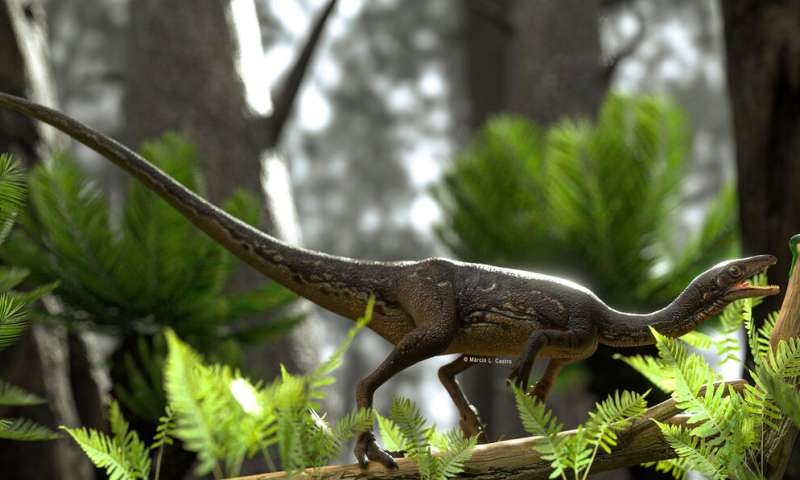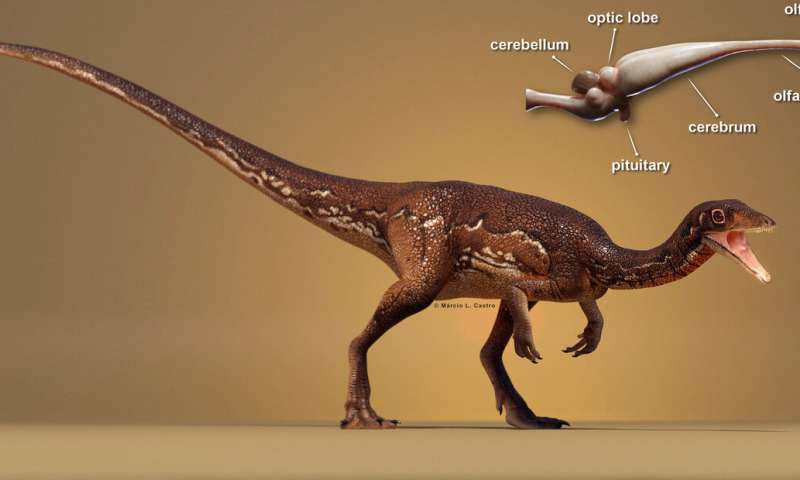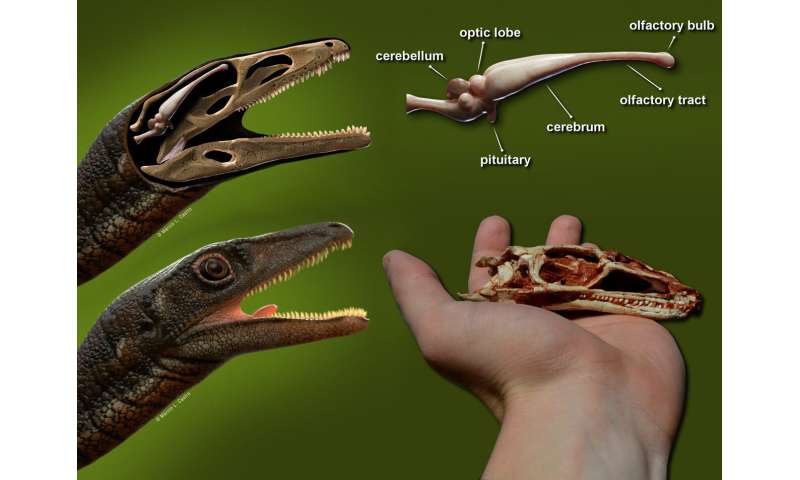
The study of the brain of extinct organisms sheds lights on their behaviors. However, soft tissues, like the brain, are not usually preserved for long periods. Hence, researchers reconstruct the brains of dinosaurs by analyzing the cranial cavities under computed tomography. It demands well-preserved braincases, which is the region that envelops the brain tissues. To date, complete and well-preserved neurocrania from the oldest dinosaurs worldwide have not been found.
In 2015, a Brazilian paleontologist from the Universidade Federal de Santa Maria, Dr. Rodrigo Temp Müller, unearthed an exceptionally well-preserved skeleton from a fossiliferous locality in southern Brazil. The skeleton, approximately 233 million years old (Triassic period), belongs to a small carnivorous dinosaur named Buriolestes schultzi and the entire braincase was preserved. Now, Brazilian researchers have reconstructed the first complete brain of one of the oldest dinosaurs worldwide.
The study was published in Journal of Anatomy and performed by Rodrigo T. Müller, José D. Ferreira, Flávio A. Pretto, and Leonardo Kerber from the Universidade Federal de Santa Maria and Mario Bronzati from the Universidade de São Paulo.
The brain of Buriolestes schultzi is relatively small and weighed approximately 1.5 grams, which is slightly lighter than a pea. The shape was primitive, resembling the general morphology of a crocodile brain. In addition, the presence of well-developed structures in the cerebellum indicates the capability to track moving prey. Conversely, the olfactory sense was not high; therefore, it is more likely that Buriolestes schultzi hunted and tracked prey based on optical capability rather than its olfactory sense.

Despite the carnivorous feeding behavior of this dinosaur, it belongs to the lineage of giant, long-necked, herbivorous sauropods, the largest land animals that ever lived. However, Buriolestes schultzi is considered the earliest member of this lineage. So, the new brain reconstruction allows researchers to analyze the brain evolution of this impressive lineage.

One of the most conspicuous trends is the increase of the olfactory bulbs. Whereas these structures responsible for the sense of smell are relatively small in Buriolestes schultzi, they become very large in later sauropods and closely related forms. The development of a strong sense of smell could be related to the acquisition of a more complex social behavior, which relies on the olfactory sense in several vertebrate groups. Alternatively, it has also been observed that high olfactory capabilities played an important role in foraging, helping animals to better discriminate between digestible and indigestible plants. Finally, another putative explanation for the increase in the olfactory sense of sauropods relies on the capability to detect predator chemical cues.

The scientists also calculated the cognitive capability, or intelligence, of Buriolestes schultzi based on the brain volume and body weight. The values obtained are higher than that of the giant sauropods, like Diplodocus and Brachiosaurus, suggesting a decrease in encephalization in the lineage. This is interesting because several other lineages present an increase in the encephalization through time. Nevertheless, the cognitive capability of Buriolestes schultzi is lower than that of theropod dinosaurs, the lineage that includes Tyrannosaurus, Velociraptor, and birds.


No comments:
Post a Comment